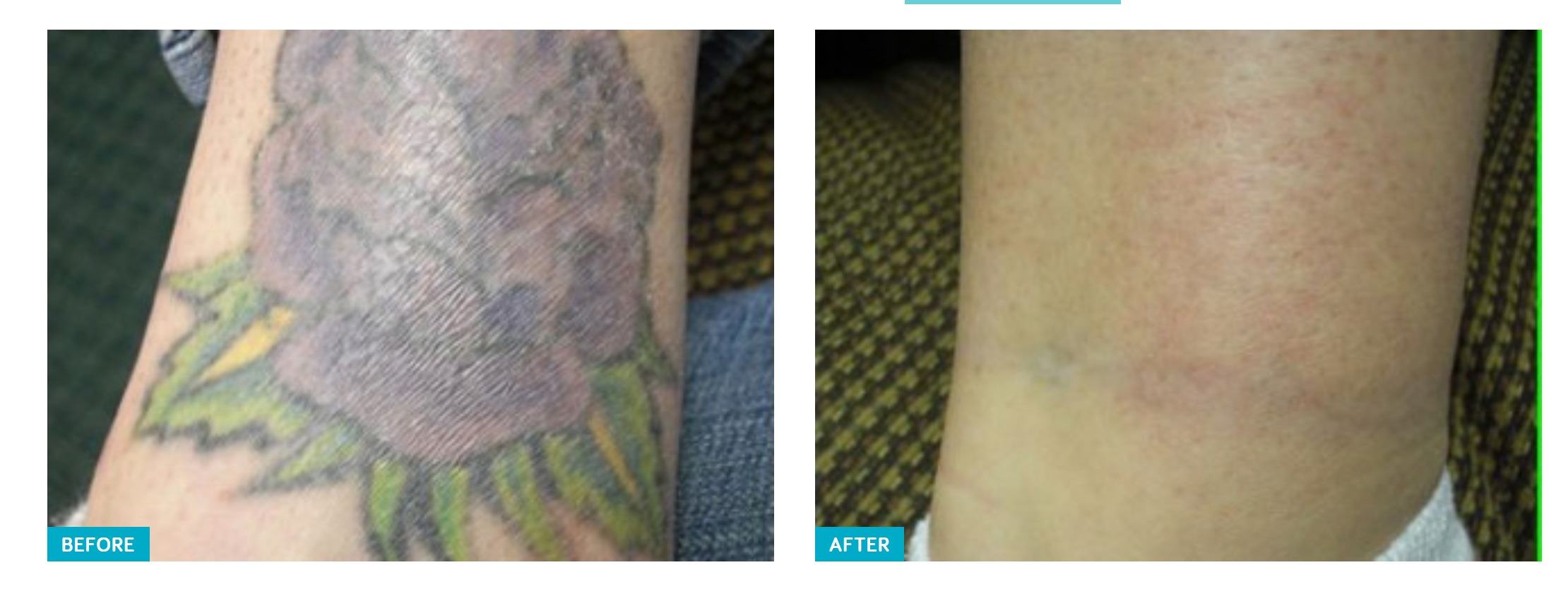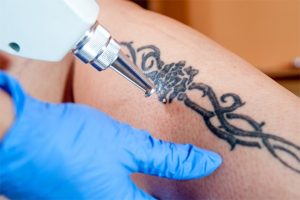Laser Tattoo Removal Before And After Photos

Laser procedures over the years have developed significantly and now play a key part in the field of cosmetic enhancement. One such procedure is laser tattoo removal, which has emerged as a reliable and effective way to eliminate permanent tattoos. At your pre-op consultation, your laser specialist will discuss all aspects of the treatment with you and help you make a judicious decision.
Some treatment providers may prefer to show laser tattoo removal before and after images at the outset for the sake of clear and transparent information sharing. These photos can provide a reasonable idea to you about how far laser tattoo removal can help. Plastic surgeon Dr. Paul McCluskey provides laser tattoo removal to patients in Atlanta, Buckhead, Georgia, and surrounding locations.
What are Laser Tattoo Removal Before and After Images?
Before and after photographs for laser tattoo removal refer to a pair or group of images pertaining to a past patient who has had the same procedure with good results. The set includes images taken before the laser treatment and after the treatment at a stage when the planned series of laser sessions has been completed and full results are visible.
Now in this laser tattoo removal case these images are not on the website but that does not mean that cannot change at any time. The before and after images currently on the website are stellar and they help verify the prowess of Dr. McCluskey. Though if you want to see images of tattoo removal you are going to have to schedule a consultation which is necessary anyway.
Your laser expert will make sure that they obtain these before and after photos with the consent of the patient and present them before new patients in a discreet way. They will probably maintain the patient’s confidentiality as per protocol. The sole purpose of your provider in this case is to educate new patients about the benefits and efficacy of laser tattoo removal and help them form realistic expectations before they finalize their decision.
Advantages
While laser tattoo removal is an established and proven procedure with an excellent track record, for new patients it can still cause concerns or apprehensions. You may worry about how the treatment will affect your skin and whether any scarring or marks will occur. You would like to ensure that the benefits of the treatment outweigh the downsides significantly.
Another issue is that the final outcome in laser tattoo removal treatments will usually vary from one patient to another, depending on their skin type, color of skin, and the size, location and quality of the tattoo. Therefore, it can get hard to visualize how successful will be your treatment. This is where laser tattoo removal before and after photos can play a key role. These photos will serve as a visual aid to help you get more clarity and make more confident choices.
Realistic Expectations and Online Photos
One of the important reasons why many laser treatment providers prefer to show before and after photos to patients is that it helps them form realistic expectations. Your risk of any disappointment at a later stage will reduce and there will be little chance of any miscommunication between you and the provider when you have access to laser tattoo removal before and after photos. You can ascertain how this will look on you when you see these images during the consultation.
Your provider also has an opportunity to create more awareness about the procedure by sharing laser tattoo removal before and after photographs through popular social media channels such as Instagram, Pinterest, and Facebook. Cosmetic surgeon Dr. Paul McCluskey receives patients from Atlanta, Buckhead, Georgia, and nearby areas for laser tattoo removal.
Contact Atlanta Plastic Surgeon Dr. Paul McCluskey for a Consultation
For more information on procedures and treatments offered by Plastic Surgeon, Dr. Paul McCluskey and the Plastic Surgery Institute of Atlanta, visit:
Serving patients in and around Atlanta, Buckhead, Morningside/Lenox Park, Roswell, Virginia-Highland, Candler Park, Midtown, Inman Park, Poncey-Highland, Ormewood Park, Roswell, Marietta, Georgia and other surrounding areas.



 Laser hair removal may be a judicious option worth considering if you are tired of tweezing, shaving, or waxing to remove unwanted hair. This procedure is one of the most commonly performed laser procedures in the United States. It involves beaming highly concentrated light waves on the hair follicles. Pigments in the hair follicles get destroyed upon absorbing the light.
Laser hair removal may be a judicious option worth considering if you are tired of tweezing, shaving, or waxing to remove unwanted hair. This procedure is one of the most commonly performed laser procedures in the United States. It involves beaming highly concentrated light waves on the hair follicles. Pigments in the hair follicles get destroyed upon absorbing the light.
 Patients can attain smoother and younger looking skin with laser skin resurfacing in a safer and more predictable manner. The procedure involves minimal discomfort and downtime while offering sustainable outcomes. You also have the option of combing this treatment along with other surgical or non-surgical procedures depending on your unique aesthetic needs and goals.
Patients can attain smoother and younger looking skin with laser skin resurfacing in a safer and more predictable manner. The procedure involves minimal discomfort and downtime while offering sustainable outcomes. You also have the option of combing this treatment along with other surgical or non-surgical procedures depending on your unique aesthetic needs and goals.